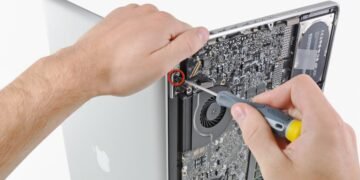When you have a child who is about to start playing tee-ball, you’ll need to start shopping around for the right equipment and gear they need. A tee ball bat is one of the most important items to own and should be comfortable to use to enhance their skills and abilities. Here are a few important steps to follow to select a tee ball bat.
Measure the Length
Measuring the length of the bat is necessary to ensure it’s the right t-ball bat size for the player. The bottom of the bat should rest on the center of their chest and extend to the middle of their palm when they have their arms outstretched. They should be able to grab the top of the baseball bat with their hand.
Another way to find the right tee ball bat is to place the bat next to the player’s leg and stand it up. The bat is the correct length if it touches the center of their hand.
With the correct length of the bat, it will allow the player to remain in control of the item and will increase their performance, strength, and accuracy.
Focus on the Weight
The overall weight of the bat is another factor that needs to be considered as you research the best tee ball bat. The weight of the product is typically labeled on the outside of the barrel or the handle. Most players start out using a bat that is 15 to 16 ounces. Smaller players can use a bat that is 13 ounces, whereas larger and stronger players can opt for a bat as heavy as 18 ounces.
Younger players who are starting out playing tee ball should be strong enough to hold the bat for up to 45 seconds on their side, otherwise, it’s too heavy for their size.
Research the Construction
Look into the construction of the different types of tee ball bats that are available to ensure it holds up well to frequent use. Both composite and alloy materials are common for tee ball bats. Composite is known to be lightweight and feels better in the hands. It also makes a louder pop noise when it has contact with the ball and can allow the ball to have more speed. The springy feeling of the bat makes it fun to use for younger players.
Alloy bats are known to have more durability, which prevents them from becoming dented or cracked easily. They make a loud “ping” sound when the player hits the ball, which can make it fun and exciting to use. The sound of the bat hitting the ball will also make the crowd go wild.
Wood is not a recommended material for younger players because it’s heavier, which can make it harder to lift and control. Wood is also known to break easily when it has contact with the ball or drops on a hard surface.
It’s also necessary to contact your child’s coach to determine the requirements of the tee-ball bat that is in use to ensure it follows the regulations in place. Some leagues require the same material to be used to ensure there’s more fairness among the different players and teams to prevent anyone from having an advantage over one another. This will increase the player’s potential with their performance and will allow them to feel more confident while spending time hitting the ball and competing against other teams.
Focus on the Feel
Help your player practice using the bats to determine if it’s comfortable and has the right feel. They should feel comfortable swinging the bat to ensure they have more confidence and can hit balls farther and with a higher level of accuracy.
It’s also important to avoid using old bats that have been used by family members in the past. Wait until the child is strong enough and has enough experience to use an older bat that may be heavier and constructed out of heavier materials like wood.
Once you understand what to look for in a tee ball bat, you can find the right product for your player to ensure they’re comfortable using the item and can perform well. Be prepared to move up to a larger bat as your child grows and becomes stronger in the near future.
Read more interesting articles at urbanlymodern







































































